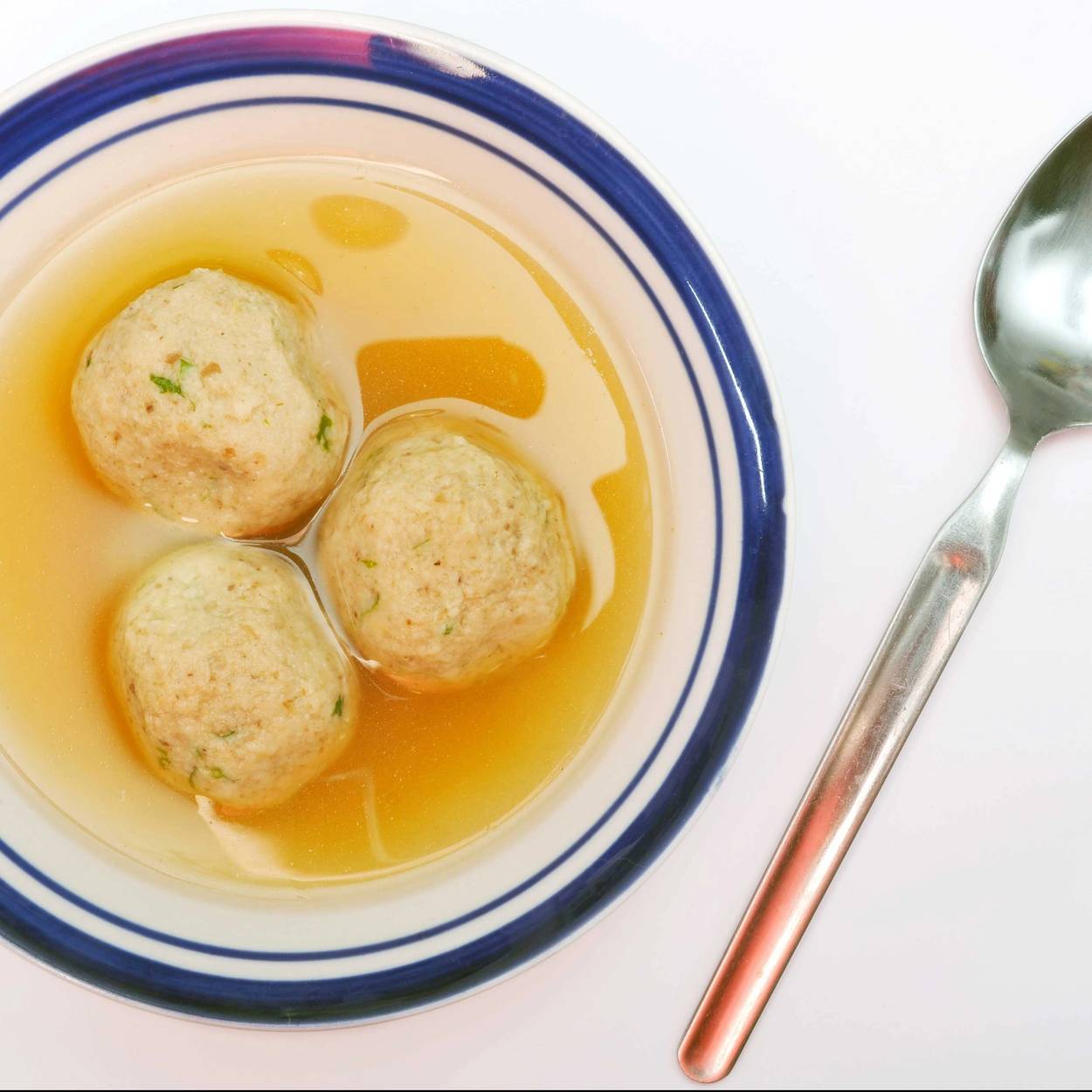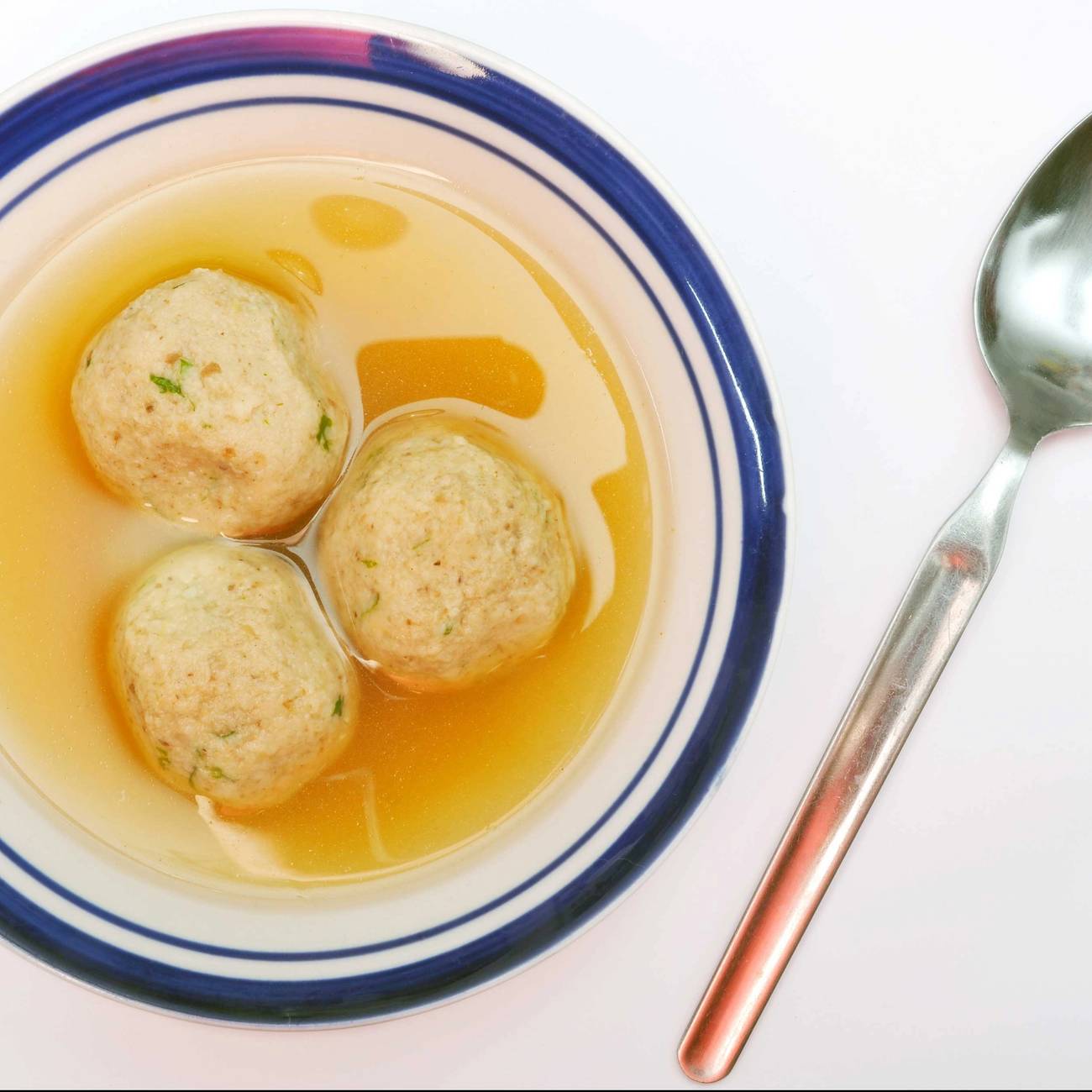Liquid Gold
‘The Chicken Soup Manifesto’ explores the universal appeal—and regional variations—of a culinary classic




Inspiration comes in many forms. For Jenn Louis, it came in the form of a terrible head cold. At the tail end of a work trip to San Diego several years ago, the Portland, Oregon-based chef found herself with a raging case of aches and sniffles while staring down a 2 1/2-hour flight home. (These days, getting on a flight in such a condition would be unthinkable—but this was the pre-coronavirus era.) Just before the flight took off, Louis called her sister. When she arrived home from the airport, she found a warm pot of chicken soup sitting on her porch. “I immediately took down three bowls,” Louis said. “I was obviously still sick but it completely nourished me.”
Growing up in a Jewish household, Louis was plenty familiar with the ubiquity of chicken soup as both a provider of comfort and a marker of Jewish identity. She understood the emotional sway and folkloric intrigue chicken soup had over the Jewish community. But her sister’s loving gesture got her pondering just how far chicken soup’s influence extends. “I started thinking about what it means in other places,” she said. “There are so many versions of chicken soup out there. I wanted to know why it’s in almost every culture and what the similarities are.” Those questions inspired Louis’ new cookbook, The Chicken Soup Manifesto, which explores the universal appeal of a humble pot of soup.
Louis is an acclaimed chef who spent years working in the hospitality industry and ran three Portland-based restaurants, including the contemporary Israeli eatery Ray. Her menus offered a wide array of flavors and dishes. But as a cookbook author, she has tended to focus on single subjects. Her first book explored Italy’s canon of hand-shaped pastas, and the second was an ode to cooking with greens. “I love the opportunity to deep dive,” she said. The Chicken Soup Manifesto follows suit, with a stunning—and delightfully diverse—collection of chicken-based soups.
The book features recipes for Brazilian canja, a nourishing chicken, vegetable, and rice soup, and Greece’s lemony, egg-thickened avgolemono. There’s the coconut milk and lemongrass-perfumed tom kha gai from Thailand, and West African chicken mafé, a spicy potage that relies on peanut butter for its hearty texture. From Israeli cuisine it offers the Persian chicken and chickpea-dumpling soup gundi and Yemenite hawaij l’morok, which gets its complex flavor from a heady mix of spices. (“We used to serve hawaij l’morok at Ray, and it was always a hit,” Louis said.) Not surprisingly, there are recipes for Jewish chicken soup with matzo balls—both classic Ashkenazi knaidlach and a Sephardic mashup flavored with cilantro.
Louis also included a few soups that hold personal resonance. On a flight home from Israel, where she’d traveled to celebrate her friend’s (cookbook author Adeena Sussman’s) wedding, Louis struck up a conversation with a Christian Palestinian named Hanan. “Before long she told me about her mom’s Palestinian chicken soup,” Louis said. In it went, both the recipe and a human-to-human connection forged over food. In another instance, Louis shared her neighbor’s chicken soup recipe, which is a twist on Eastern European Jewish noodle soup, with a hint of pine flavor from the sprinkle of chopped rosemary.
The Chicken Soup Manifesto is, of course, not the first book to celebrate chicken soup’s magnetism. Maurice Sendak’s endearing classic Chicken Soup with Rice proclaims, “All seasons of the year are nice for eating chicken soup with rice.” The Chicken Soup for the Soul series, which dominated the bestseller charts in the 1990s, sold millions of copies on the back of the soup’s metaphorical power. And in 1995, Mimi Sheraton wrote her own treatise on the subject, The Whole World Loves Chicken Soup.
Like The Chicken Soup Manifesto, Sheraton’s work is also a cookbook featuring soup recipes from around the globe. But Sheraton’s approach is more literary, which is fitting considering she spent her professional life as a restaurant critic and food journalist. She weaves storytelling amid the recipes, from her reminiscences of the boiled “unborn eggs” that were once the prize of every soup pot at Shabbat dinner, to an old Louisiana nursery rhyme: “The rooster and the chicken had a fight/The chicken knocked the rooster out of sight/The rooster told the chicken, That’s all right/I’ll meet you in the gumbo tomorrow night.”
The Chicken Soup Manifesto’s greatest strength, meanwhile, stems from Louis’ culinary background. Her recipes are straightforward and workable for any home cook, while staying true to the country of origin. The book is peppered with useful techniques, from discerning the difference between broth, stock, and bouillon to common mistakes cooks make around their soup pots. (One pro tip: “Don’t boil stock or broth: The fat will emulsify into the broth, giving the soup a greasy mouthfeel.”) Despite the quarter-century between them, Sheraton’s and Louis’ books make fitting companions set side-by-side on the shelf—a testament to the true lasting power of chicken soup’s allure.
Whether it is a physical malady or heartache that ails, little comforts as well as a bowl of chicken soup. “Wherever you go, most cultures say the same thing about chicken soup: It is healing,” said Louis. “That, and it is good for hangovers.”